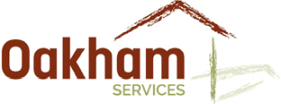INVENTORY
An inventory is a true representation of your property taken before the start of any tenancy. To ensure the property is returned to you in the best possible condition, it is essential that a detailed and thorough inventory is taken prior to a tenant moving in. Each aspect of the property is fully inspected and described in detail:
- Doors
- Floors
- Walls
- Windows
- Ceilings
- Lighting
- Heating
- Sockets
- Furniture and Contents
- Suite
- Kitchen units and appliances
- Gardens
- Outbuildings
- Garages
CHECK-IN
When a tenant is ready to occupy the property, a Check-in should be carried out to allow the tenant the chance to clearly understand the inventory report and gain their agreement to the condition and contents of the property
Additional comments will be logged and recorded. This is conducted to avoid disputes at the end of the tenancy, as the tenant should be fully aware of the condition of the property when he/she begins their tenancy in order to return the property to a similar state at the end of their tenancy. Meter readings, keys, smoke detector, carbon monoxide alarm testing are also recorded at this stage and signed for along with the inventory report.
CHECK-OUT
The checkout takes place at the end of the tenancy. The inventory created at the beginning of the tenancy is used to compare the condition of the property.
We will make a detailed report noting any differences to the condition of the property and indicate whether the differences need to be rectified i.e. cleaning, maintenance issues, fair wear and tear, rubbish removal, garden maintenance etc.
When the tenant is present for the check out, we will highlight any areas that may affect the return of their deposit. A forwarding address will be taken (if provided by the tenant), record final meter readings, take the keys and return them to where instructed. The property will be secured and tenant unable to re –enter the property once the check- out has been carried out and keys handed over.
INTERIM INSPECTIONS
During the tenancy we can arrange an appointment with the tenants to attend the property and check for any potential issues. This helps bring peace of mind to landlords, so they are aware that their property is being looked after, it also allows us to communicate and log anything that may be of concern to the tenants.
We will identify areas of concern including mould or mildew, leaks, obvious tenant damages, pets being kept, smoking in the property, subletting etc. We will also ask tenants if they are aware of any maintenance issues that may not be immediately obvious, such as heating not working, security issues, problems with appliances included in the tenancy etc. Supporting photographs will be taken to show clearly the issues so any works can be quoted or undertaken.
COMPLIANCE CHECKS
Inspecting properties to assess for legionella, smoke and carbon monoxide legislations as well as appliance instructions, gas and electric certificates and noting any other health and safety issues that may be present.
Smoke alarms are now legally required in all privately rented properties on all habitable floors. These are tested and recorded as standard.
Carbon Monoxide alarms are legally required where there is an open fuel burning source, these are also tested and recorded as standard.
LEGIONELLA RISK ASSESSMENTS
Residential landlords have a ‘duty of care’ for assessing the risk of the hot and cold water systems within each rental property and recording it in a documented format. It needs to clearly show what responsibilities the tenants/ agents or any other parties involved need to take to ensure the risk is minimised.
Landlords may choose to carry out their own legionella risk assessment if they feel competent. Alternatively, they can choose Oakham to carry out their assessment by our trained and competent staff at an affordable rate. All reports contain guidelines for tenants/ landlords, basic schematic of the system, supporting photographs of each item, any areas of concern that needs to be addressed in low/medium or high risk grading.
